Scotney Estate Walk - 25/07/17
Managed by the National Trust, Scotney is best known for its castle, house and formal gardens around the old castle moat. However, there are several circular routes you can walk around the estate and the one we chose today started off with the blue route, then hopped onto the orange route back to the car park (should anyone wish to replicate the walk).
I had to be very careful with recording here as botanical Sussex and Kent overlap and the border doesn't appear to make sense. However, I was very careful to only record Kent side, though I photographed interesting plants in both counties of course.
I have put these on the blog in alphabetical order (scientific name) and not in the order we found them, done like that so I don't miss any.
Here's what we found.
This and the following 3 photos are of Sneezewort, becoming a rarity in Kent. The flowers are very similar to the very common Yarrow though more open, but the leaves are completely different to Yarrow.
Achillea ptarmica
This is Angelica, a large tall plant that looks a bit like Hogweed. However, the stems are often light purple and the sheaths at the leaf junctions are inflated and large. They usually like the soil to be damp or wet, so look for them in damp places.
Angelica sylvestris
Another lover of damp places is Hemp Agrimony, a big hit with bees, butterflies and beetles.
Eupatorium cannabinum
Common Blue
Hypericum tetrapterum
Another damp loving species, seems virtually all are this day was this Greater Birdsfoot Trefoil. Usually much bigger than Common BF Trefoil with lower sepals bent out and down when in bud. The lower stems are hollow and they seem to lack the red or orange of its smaller cousin when in bud and flower.
The scruffy but very intense coloured flowers of Purple Loosestrife, again often found next to or in water.
The beautiful usually double flowers of Musk Mallow. I've found it on chalk slopes and here on neutral grassland, so a fairly soil tolerant plant.
In a ditch were patches of the rare Ivy-leaved Water Crowfoot, sadly not in flower. These were found on a Kent and Sussex Botanical Field Trip here in Spring.
My final offering is the humble Upright Hedge Parsley, still in flower now, in September.
Torilis japonica
I hope you enjoyed reading this. The monads were very well recorded squares but had never been recorded in Summer. As such, I found many new records, even though part of the walk had been covered by a Botanical Field Trip earlier that year. Even well known places are always worth a re-look at different times of the year. I've recently had minor surgery so I have a chance to catch up a bit on my blogs. Come back soon, the next instalment is on its way!
Regards
Dave
@Barbus59
I had to be very careful with recording here as botanical Sussex and Kent overlap and the border doesn't appear to make sense. However, I was very careful to only record Kent side, though I photographed interesting plants in both counties of course.
I have put these on the blog in alphabetical order (scientific name) and not in the order we found them, done like that so I don't miss any.
Here's what we found.
This and the following 3 photos are of Sneezewort, becoming a rarity in Kent. The flowers are very similar to the very common Yarrow though more open, but the leaves are completely different to Yarrow.
Achillea ptarmica
This is Angelica, a large tall plant that looks a bit like Hogweed. However, the stems are often light purple and the sheaths at the leaf junctions are inflated and large. They usually like the soil to be damp or wet, so look for them in damp places.
Angelica sylvestris
Another lover of damp places is Hemp Agrimony, a big hit with bees, butterflies and beetles.
Eupatorium cannabinum
A Comma butterfly on Hemp Agrimony
Common Blue on Centaurea nigra agg (Common Knapweed)
Common Blue
Bell Heather
Erica cineria
Many of the photos here are of plants that like things damp. The next photo is the lovely smelling Meadowsweet, complete with a pollinator.
Filipendula ulmaria
These beautiful flowers below were also by a stream bank. I've seen them quite a bit lately, yet didn't see any for the first 3 years I went flower hunting.
Bifid Hemp-nettle
Galeopsis bifida
Growing right next to those were close relatives, the Common Hemp -nettle
Galeopsis tetrahit
Walking through a sheep field there were several of these Giant Puffballs, an edible fungi, though we left these alone.
I seemed to be having a lucky day with butterflies. I think they were intent on feeding giving me the chance of some half decent photos for a change.
This is a Green-veined White on Water Mint
I took this photo as a habitat shot for several water loving plants. It's the River Teise and is the botanical boundary between Kent and Sussex here.
The dominant plant is the invasive Himalayan Balsam (to the left), with Purple Loosestrife (to the right), and Angelica in the far backfround.
When you find a St. John's Wort it's always worth lightly feeling the stem between your fingers. It really helps identify it.
You can feel dense hairs if it's Hairy St John's Wort, a single ridge for Perforate (sometimes two opposite ridges), a rounded stem for Slender and a square stem for Square-stalked, which this one is.
Hypericum tetrapterum
Here's the dreaded Himalayan (or Indian) Balsam. It's an invasive alien which smothers out other vegatation on river banks. In Winter it dies off leaving completely bare banks which erode and are swept away in Winter floods.
A problematic plant.
Impatiens glandulifera
Another damp loving species, seems virtually all are this day was this Greater Birdsfoot Trefoil. Usually much bigger than Common BF Trefoil with lower sepals bent out and down when in bud. The lower stems are hollow and they seem to lack the red or orange of its smaller cousin when in bud and flower.
Lotus pedunculatus
The scruffy but very intense coloured flowers of Purple Loosestrife, again often found next to or in water.
Lythrum salicaria
The beautiful usually double flowers of Musk Mallow. I've found it on chalk slopes and here on neutral grassland, so a fairly soil tolerant plant.
Malva moschata
This Meadow Brown on Large Bindweed is on its last legs, a reminder that Summer doesn't last forever.
The next plant is hemiparasitical, meaning it contains chlorophyll but also attaches its roots to nearby plants to gain nutrients.
Common Cow-wheat
Melampyrum pratense subsp pratense
Back to damp loving plants again!
Here's Water-pepper, very common and often overlooked. It has tiny pink and white flowers on the drooping stems. Put a leaf in your salad (they are edible) and it will blow your head off with a hot peppery taste, (hence its name).
Persicaria hydropiper
Then of course, there's the ever present Water Mint, far more common than its dry soil counterpart, Corn Mint.
Mentha aquatica
And here's a nice photo of both species of the last 2 photos growing together, Water Mint and Water-pepper.
Common Fleabane, a plant which really is common and a brilliant food plant for insects and butterflies. It's bright yellow flowers very attractive to humans and pollinators.
Pulicaria dysenterica
In a ditch were patches of the rare Ivy-leaved Water Crowfoot, sadly not in flower. These were found on a Kent and Sussex Botanical Field Trip here in Spring.
Ranunculus hederaceus
I got lucky again with the butterflies, this time a very fresh Red Admiral on Hemp Agrimony. This will feed up then hibernate over the Winter, possibly in your garden shed!
There are some nice views on the walk, here's Scotney Castle, House and gardens. The lawns outside the house (top of hill) are home to a wild population of several hundred Green Winged Orchids in the Spring, worth bearing in mind if you fancy a visit.
Back in the water and this Branched Bur-reed was in flower. Easily recognised and very common.
Sparganium erectum
My final offering is the humble Upright Hedge Parsley, still in flower now, in September.
Torilis japonica
I hope you enjoyed reading this. The monads were very well recorded squares but had never been recorded in Summer. As such, I found many new records, even though part of the walk had been covered by a Botanical Field Trip earlier that year. Even well known places are always worth a re-look at different times of the year. I've recently had minor surgery so I have a chance to catch up a bit on my blogs. Come back soon, the next instalment is on its way!
Regards
Dave
@Barbus59
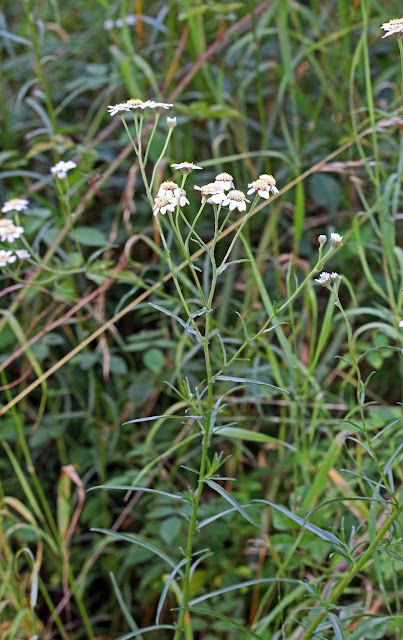






















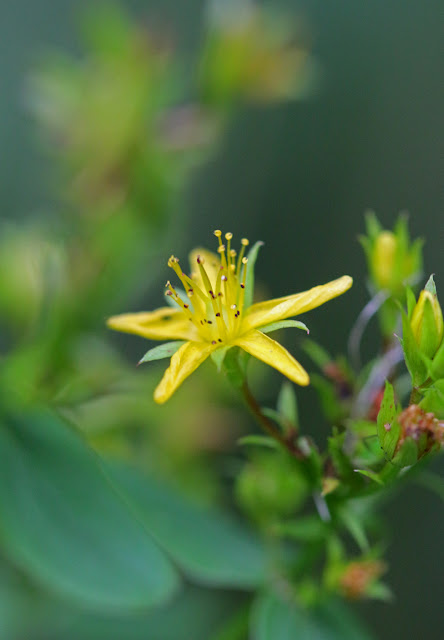




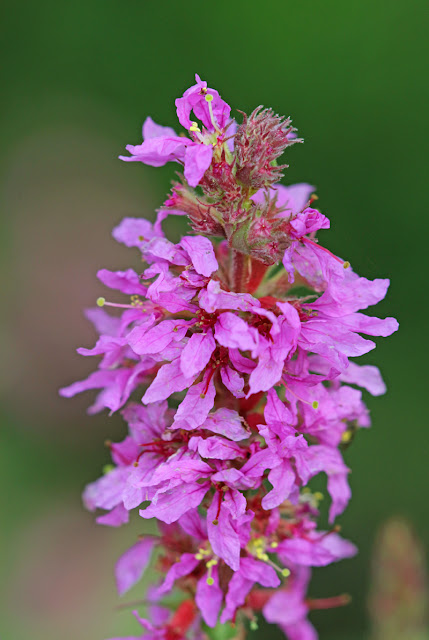






















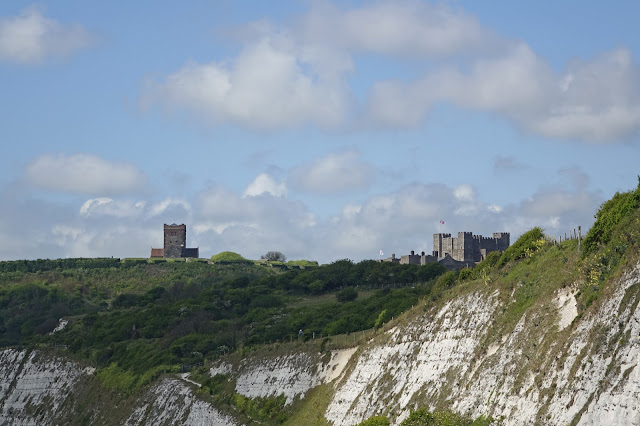
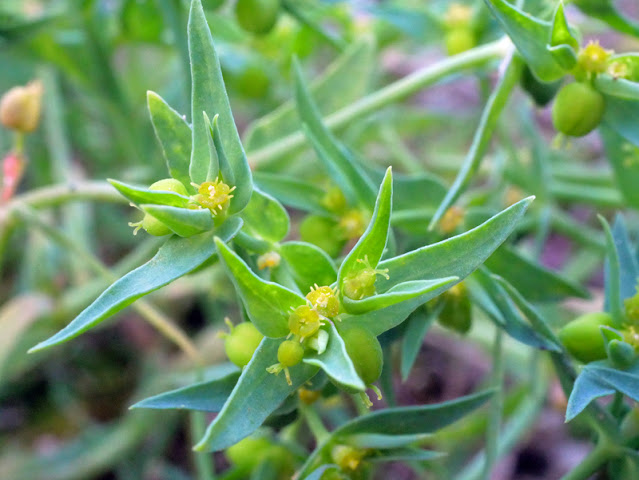
Comments
Post a Comment
Comments welcome from those interested in my articles. For spammers don't bother as I moderate all comments prior to posting them.